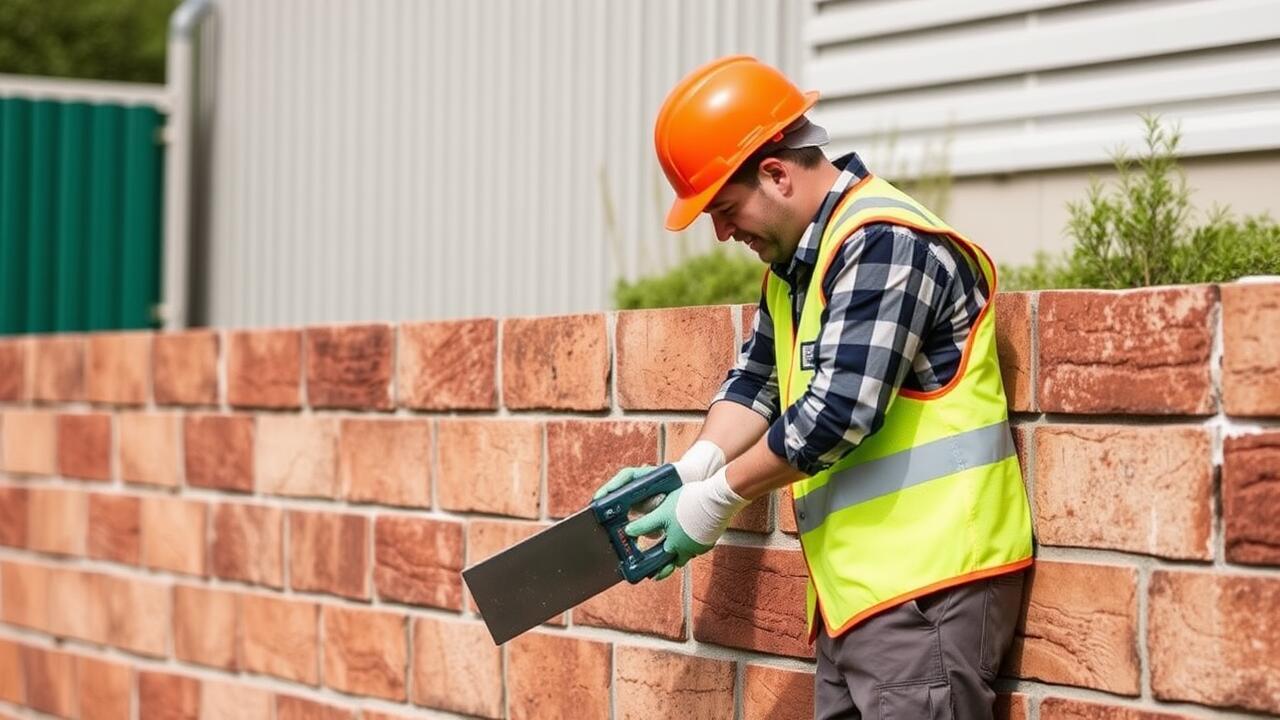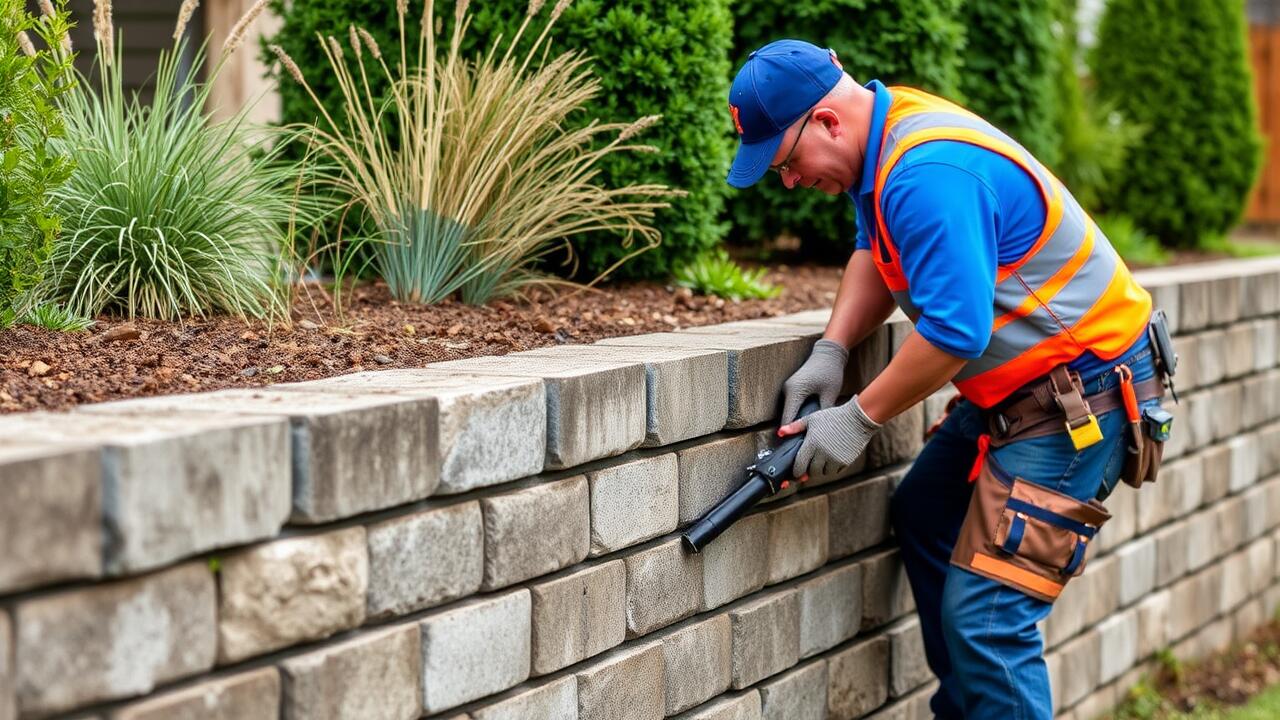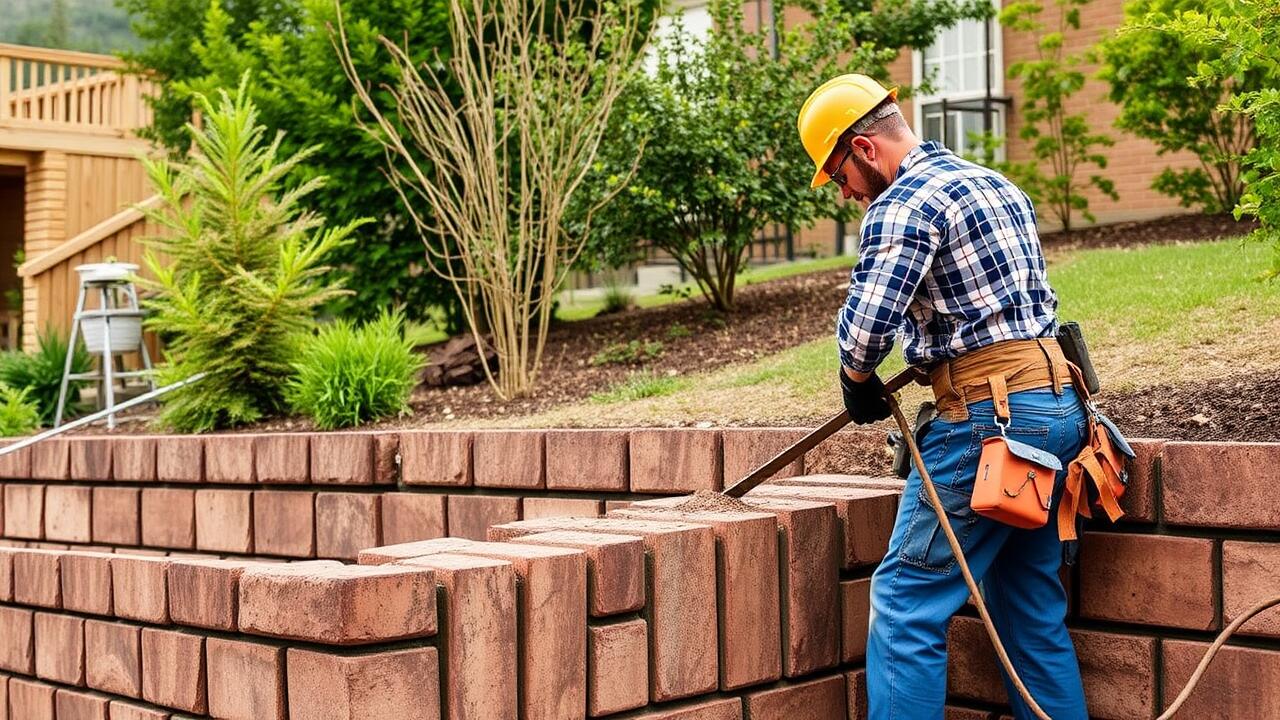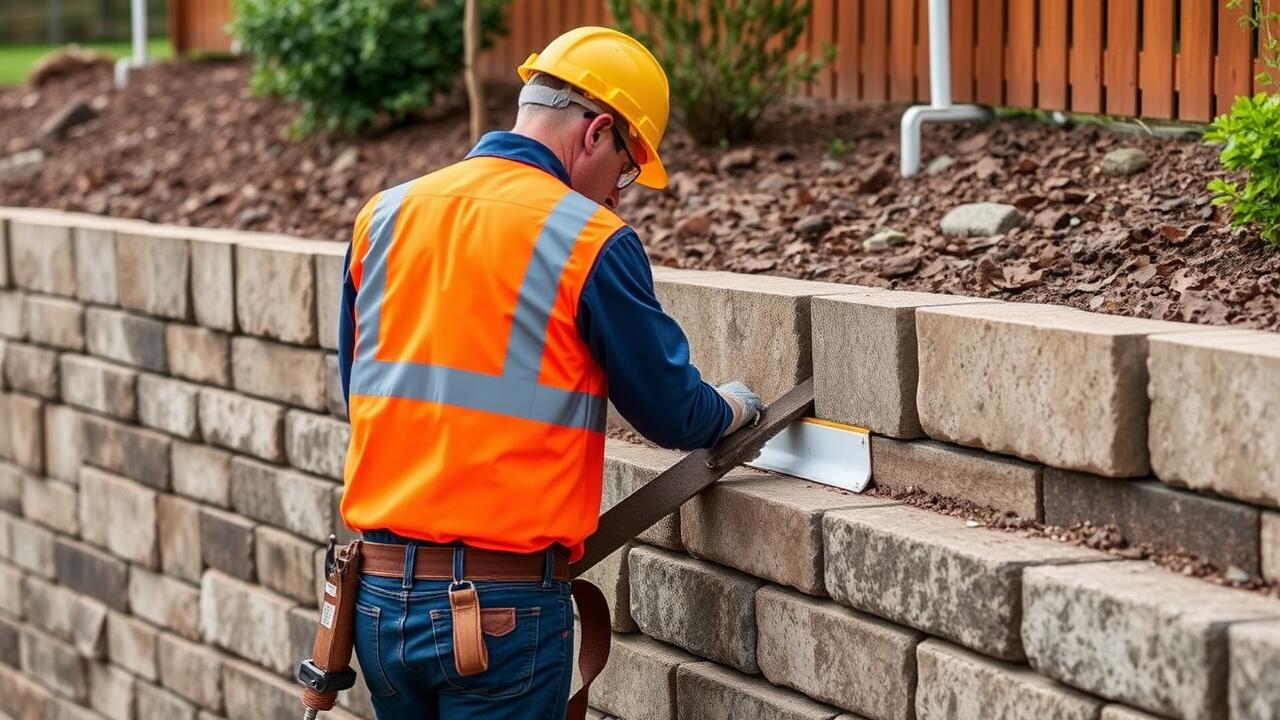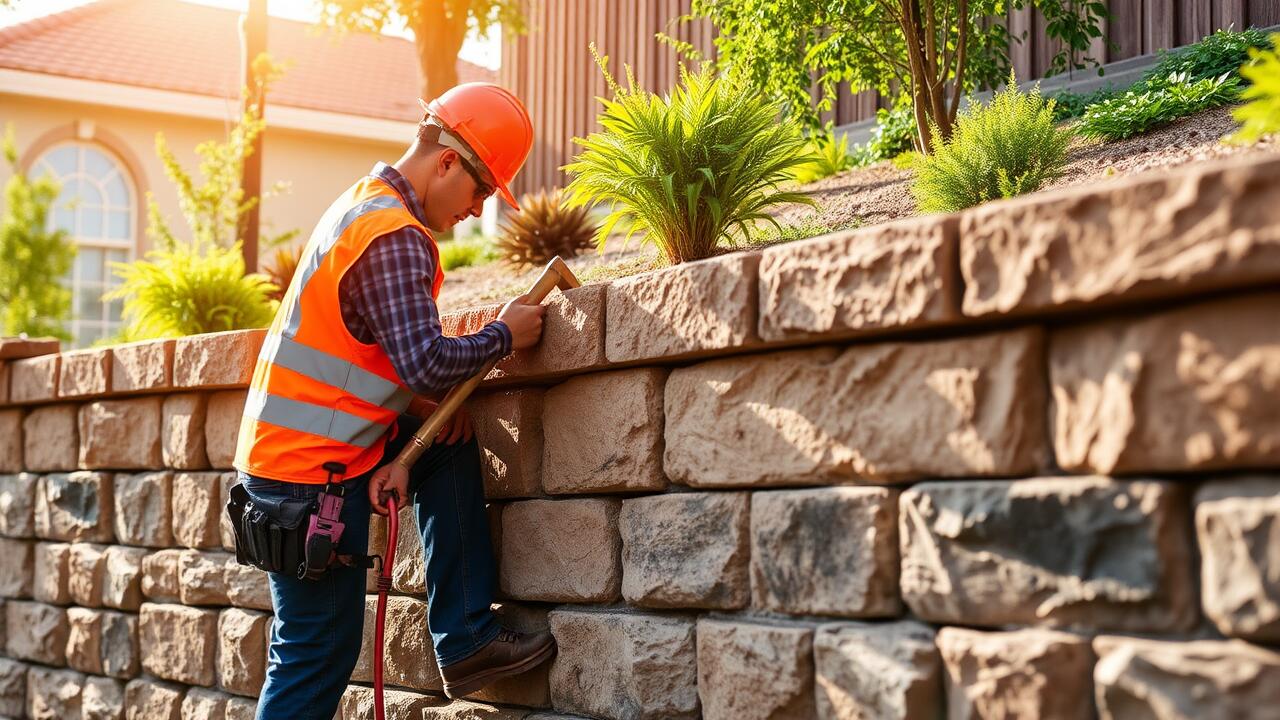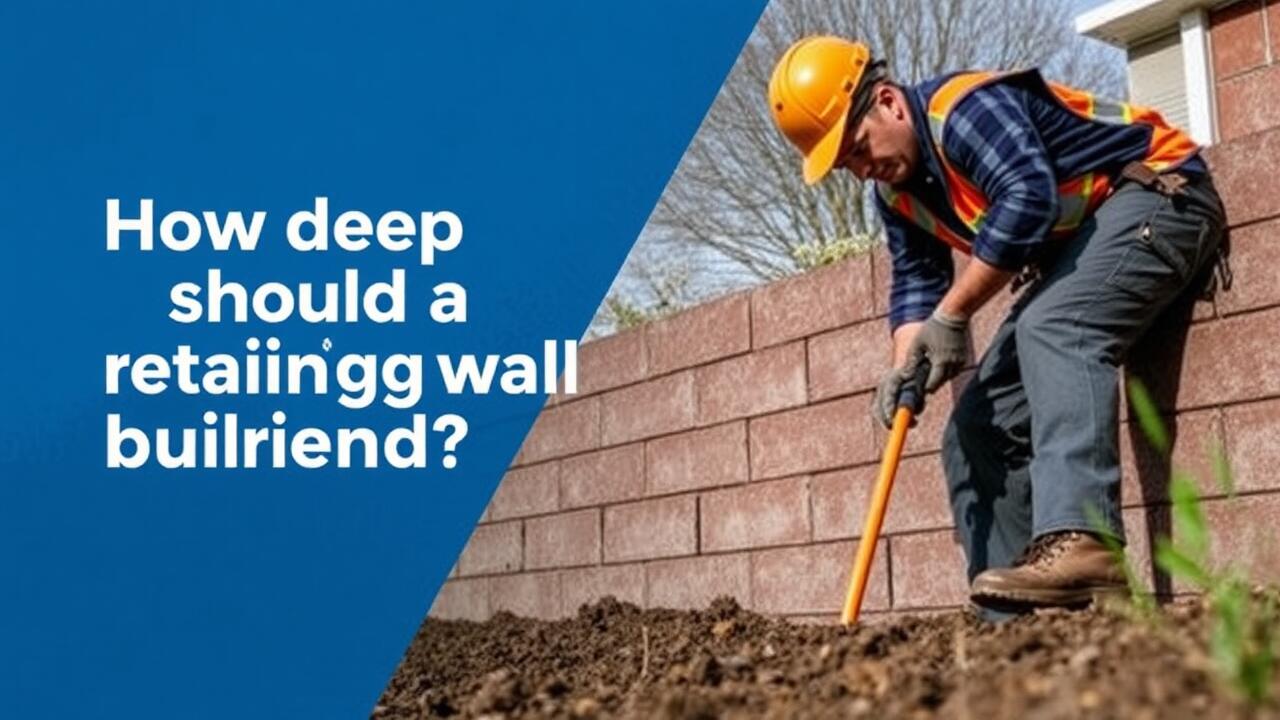
Materials Used in Retaining Walls
Various materials are commonly used to construct retaining walls, each presenting unique advantages and challenges. Concrete is one of the most popular choices due to its durability and versatility. It can be poured into molds for custom shapes or used in block form for ease of installation. Stone offers a natural aesthetic appeal and, when properly interlocked, provides significant strength against soil pressure. Timber remains a traditional option, particularly for smaller walls, though it may have a shorter lifespan due to potential decay.
The selection of materials plays a critical role in Retaining Wall Installation, affecting the wall’s strength, longevity, and overall performance. Steel reinforcements can enhance the structural integrity of concrete walls, while geogrid systems provide additional support for earth retention. In contrast, materials like timber may require more frequent maintenance and replacement. Understanding the characteristics of these materials helps in making an informed decision that supports long-term stability.
Impact on Buried Depth
The buried depth of a retaining wall is influenced by various factors, including the type of soil, the height of the wall, and the load it must support. When evaluating these factors during the initial phases of Retaining Wall Installation, engineers typically assess soil characteristics, such as cohesion and angle of internal friction. A wall requires adequate depth to ensure stability, particularly when dealing with expansive or loose soils that may exert additional pressure.
Additionally, the design of the retaining wall plays a critical role in determining how deep it must be buried. Modular block walls, for example, may require different depth considerations compared to concrete or gravity walls. Specific design elements, such as drainage systems, should also be integrated during Retaining Wall Installation to enhance performance and longevity. Collectively, these considerations ensure the wall can withstand lateral forces and prevent failures during its service life.
Types of Retaining Walls
Retaining walls come in various types, each designed to serve specific purposes and accommodate different site conditions. Gravity retaining walls rely on their weight to resist lateral pressure from soil and water. These structures are typically made from heavy materials like concrete or stone. Cantilever retaining walls utilize a lever mechanism to support the soil behind them. This type is usually made from reinforced concrete and is more efficient in terms of material use compared to gravity walls.
Another option is the anchored retaining wall, which uses cables or rods anchored deep into the soil. This design provides additional stability against earth pressure, making it suitable for situations involving higher loads. Lastly, sheet piling walls consist of thin, vertical sheets driven into the ground to hold back soil. They are often used in areas with limited space and can be a smart choice when considering Retaining Wall Installation on elevated sites. Each type has unique design criteria and depth requirements based on the specific challenges presented by the landscape and soil conditions.
Differences in Design and Depth Requirements
Different types of retaining walls have varying design criteria, which significantly influence their burial depth. Gravity walls, for instance, rely on their own weight to resist earth pressures. Such walls are generally constructed using solid materials like concrete or masonry. They tend to require less depth compared to cantilever walls, which use a more complex design to minimize material while maximizing strength, often leading to a need for greater burial depth to ensure stability.
The installed depth also varies with respect to soil conditions and wall height. During retaining wall installation, engineers consider factors such as soil type, moisture levels, and the wall's intended height. These factors directly affect how deeply the footing needs to be set. In some cases, additional reinforcements or drainage solutions may be necessary to counteract potential adverse effects of soil saturation or lateral pressure.
Signs of Insufficient Depth
Signs of insufficient depth in a retaining wall can manifest in several noticeable ways. One primary indicator is the presence of cracks along the wall's surface. These cracks may begin as small fissures but can grow larger over time, indicating that the wall is experiencing undue pressure from the soil it is meant to hold back. In addition to cracks, leaning or tilting of the wall is a critical concern. If a wall starts to lean significantly, this often suggests that the foundation is inadequate to support the weight of the retained soil, which could lead to eventual failure.
During retaining wall installation, attention should be paid to drainage as well. Poor drainage can lead to water buildup, increasing hydrostatic pressure behind the wall. This situation can exacerbate any existing structural issues, making it more likely for the wall to fail. Other signs include soil erosion at the base of the wall or excessive vegetation growth, which may indicate shifting soil and poor stability. Regular inspection of these indicators can help in assessing the performance of a retaining wall and determining if remedial measures are necessary.
Identifying Potential Failures
Identifying potential failures in retaining wall installation is crucial for maintaining the integrity of the structure and preventing damage. Common signs of insufficient depth might include visible cracks in the wall, leaning or bulging of the structure, and erosion around the base. Regular inspections can help catch these issues early, allowing for timely interventions to prevent further deterioration.
Another indicator of a failing retaining wall is water pooling at the base, which can signal drainage problems. Proper drainage is essential to relieve hydrostatic pressure, which can compromise the stability of the wall. Observing these signs can lead to early detection and necessary corrective measures to ensure the longevity and effectiveness of the retaining wall.
FAQS
How deep should a retaining wall be buried?
The depth a retaining wall should be buried generally depends on the wall's height, type, and the soil conditions. A common guideline is to bury at least one-third of the wall's height below the ground level.
What materials are commonly used for retaining walls?
Common materials for retaining walls include concrete blocks, poured concrete, natural stone, timber, and gabion baskets. Each material has different design considerations and depth requirements.
What factors impact the buried depth of a retaining wall?
Factors that impact buried depth include soil type, wall height, load conditions, drainage needs, and whether the wall is designed to resist lateral pressures from the soil.
How can I tell if my retaining wall is not buried deeply enough?
Signs of insufficient depth include visible leaning or tilting of the wall, cracks in the structure, soil erosion around the base, or water pooling at the wall's base.
Are there different types of retaining walls that require different depths?
Yes, there are various types of retaining walls, including gravity walls, cantilever walls, anchored walls, and segmental walls, each with different design and depth requirements based on their structural mechanisms.
